Bakken shale
description: a rock unit in the Williston Basin, rich in oil and natural gas
15 results
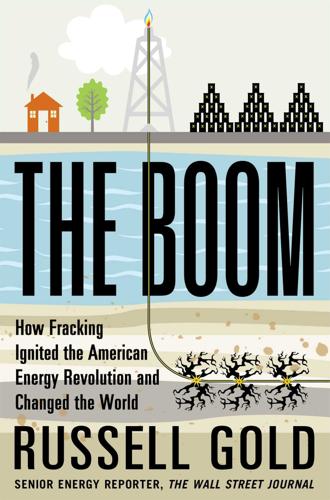
The Boom: How Fracking Ignited the American Energy Revolution and Changed the World
by
Russell Gold
Published 7 Apr 2014
.: Devon and, 141, 155 drilling fund of, 138–42 Nichols, Larry, 135–38 background of, 138, 140–41, 156 comparisons between McClendon and, 155–56 conservatism of, 141, 148, 151, 156 Devon’s acquisitions and, 137, 142–44, 155, 157 Gold’s visit with, 156–58 and research and development, 143–44, 148, 155 and sale of Mitchell Energy, 135–37 Niels Esperson Building, 88, 91–92, 95, 111–12 Nigeria, 33–34, 50, 125 Nilles, Bruce, 258–59 9/11 terrorist attacks, 137–38, 151, 251 Nixon, Richard, 50, 81, 83, 162 Nogee, Alan, 261 noise logs, 288–89 Nolte, Kenneth, 129 North Dakota, 3, 5–6 Bakken Shale in, 33, 38, 43–46, 49, 57 employment and, 37–38, 46, 57 fracking and, 37–49, 51–57, 60–62, 122 gas and, 39, 309–10 oil in, 6, 33, 38–39, 42–44, 49–50, 55–57, 60, 130, 310 North Field, 17 Norton, Wylie, 211, 232–33 nuclear power, 79–83, 266, 303 fracking and, 80–83, 129 gas vs., 5, 35–36, 254 in Germany, 302 opposition to, 79, 263 Nucor, 304, 306 Obama, Barack, 58–59 Occidental Petroleum, 176 Ohio, 2, 5, 192, 206–7, 221 oil, 2–10, 84, 103–6, 196, 231, 234–35, 254, 264, 303–6 Austin Chalk and, 176–77 Bakken Shale and, 33, 38–40, 43–44, 46–47, 49, 54–58, 62, 303 Barnett Shale and, 117, 132 benefits of, 19, 21, 58–59 Burkburnett and, 20–23, 27, 30, 34, 300 Cambe and, 86–87 Chesapeake and, 173, 179, 187, 194, 199, 252 Chu on, 59 Cooke and, 277–79, 281–82 Deepwater Horizon and, 260–61, 273–74 demand for, 74–75 drawbacks of, 19–22, 34, 59 drilling funds and, 139–40, 142 Eads and, 180, 185, 204 East Virgil prospect and, 170–71 extracted in Los Angeles, 149 Farris’s research and, 71–72 finances and, 8–9, 50, 56–57, 74, 125, 129, 133–34, 138, 141, 167, 179, 282, 285 Fish’s background and, 61–62 fracking and, 2–3, 5–6, 13, 18, 23, 27–30, 33–34, 40–41, 43–44, 48, 52, 54, 62–64, 66–70, 75–78, 80, 82, 103, 297, 303, 305 Gearhart and, 281–83, 285, 291 and Gulf of Mexico, 19, 75, 113, 134, 164, 260, 273–74 history and, 14, 16–18, 63–83 independents and, 2–3 industry research on, 70–74, 76–79 McClendon and, 9–10, 161–62, 164–65, 167–69, 174, 190, 198–99, 201–2, 206 mineral rights and, 21–22, 168, 191, 193 Mitchell and, 7–10, 86–87, 90–92, 95, 97, 105–6, 111, 134 mixing of water and, 98–100, 279 Nichols and, 138, 140–42, 156 in North Dakota, 6, 33, 38–39, 42–44, 49–50, 55–57, 60, 130, 310 peak, 57, 77–79 Permian Basin and, 130, 230 Perot Museum and, 295–96 and proximity of wells, 19–20 regulation of, 23, 25, 43, 98–99, 101, 106, 109–11, 113, 151, 180, 232, 287, 289, 291 Spindletop and, 68–69 Steinsberger on, 131–32 Sullivan County and, 225–26 superstitions and, 54, 71, 151–52, 277–78 technology of extraction of, 59–60, 63, 66–70, 74 Titusville and, 63, 65–67 U.S. consumption of, 5–6, 49 U.S. importation of, 33–35, 49–50, 59, 83, 122, 303–4 U.S. production of, 24, 33–34, 49–51, 74, 77–78, 304 Utica Shale and, 206, 221 well construction integrity and, 271–72, 277, 280, 285, 292 from Wilmington oil field, 118–19 Oil!
…
Thanks to fracking, the United States is producing more natural gas than ever. The same technology used to get gas out of shale is now being used to get oil as well. In the summer of 2013, the United States pumped nearly 7.5 million barrels a day of crude oil, a level unseen since 1990. North Dakota, home to the Bakken Shale, was producing 875,000 barrels a day, up from 150,000 barrels five years earlier. For decades, the United States has imported millions of barrels of oil every day. Imports are now falling. While it seems unlikely that America will ever become “energy independent,” it is certainly unwinding its dependence on foreign suppliers in the Middle East and Africa.
…
“No one gets hurt today, right?” There are murmurs of assent. One worker yells, “Exactly!” “All right, gentlemen,” Byington says as he looks around, “let’s go have some fun.” I have come to North Dakota to observe the fracking of the Irene Kovaloff 11-18H, a well on the southern edge of the Bakken Shale. There is nothing exotic about the well. It is one of a crowd of one hundred wells that will be fracked in the United States on this particular day in October 2012, ten in North Dakota alone. I could have chosen any number of places to witness a frack. But North Dakota offered an unvarnished view of the industry at full throttle.
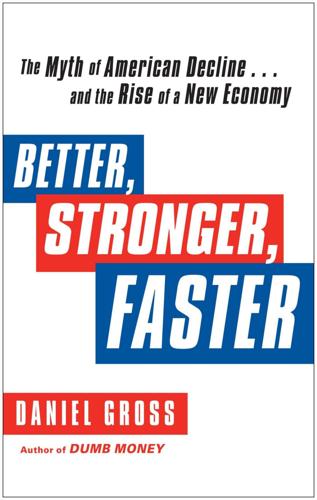
Better, Stronger, Faster: The Myth of American Decline . . . And the Rise of a New Economy
by
Daniel Gross
Published 7 May 2012
In recent years drillers have also perfected horizontal drilling techniques, delving up to two miles deep and then two miles across—an efficient means of exploring vast stretches of territory. Once the two techniques were married in the Bakken Shale in 2007, oil rigs and workers came rushing in. Oil production rose sharply, from 45.9 million barrels in 2007 to 113 million in 2010 and more than 150 million in 2011, making North Dakota the fourth-largest oil-producing state in the United States and a larger force in the market than Ecuador, an OPEC member. With more investment in the Bakken Shale, which covers a swath of North Dakota that is larger than the state of Maryland, locals believe production can double from the current level of 418,000 barrels per day.
…
The boom in the state, whose economy grew a BRIC-esque 7 percent in 2010, is being led by oil.3 First discovered in the 1950s, the oil fields in western North Dakota declined in the 1980s and 1990s. Oil production peaked at about 150,000 barrels per day in the late 1970s, and in 2001 it fell to a relative trickle of 85,000 barrels per day. But starting in the middle of the 2000s, new techniques were brought to bear in the Bakken Shale, the stratum of rock that lies under about 15,000 square miles of scrubland in the western part of the state. It turned out that hydraulic fracturing, or fracking—the technique first developed in the Barnett Shale in Texas, in which massive water pressure is applied to liberate natural gas from rock—can also be used to liberate liquid oil.
…
Index Abdullah, King of Saudi Arabia, 125 advertising, 7, 50, 136, 143, 201, 202 exports and, 129–30 Aegis Communications, 172 agriculture, 20, 99–101, 206, 227 exports and, 100–101, 104, 122, 154, 160 in North Dakota, 149, 153–58, 162 AIA, 35 AIG, 32–33, 35–36, 133 Airbnb, 194–95 Ally Financial, 40, 42 Altman, Daniel, 141 Amazon.com, 22, 203 American Association of Publishers, 193 American Bankers Association, 12–13 American Petroleum Institute, 104 American Recovery and Reinvestment Act, 30 American Society of Civil Engineers (ASCE), 208 Anheuser-Busch, 95, 158 AOL, 183–84, 195 A123 Systems, 211 Apple, 140–41, 143, 195, 198–201 Areddy, James T., 101 Argentina, 85, 176, 203 arms, exports of, 108–9 Armstrong, Tim, 183 Arvizu, Dan, 210 Asia, 13, 35, 87, 144, 203, 226, 228 employment and, 164, 168 exports and, 103, 105, 120, 123 inports and, 131, 138, 140, 146 North Dakota and, 155, 161 and reshoring and insourcing, 169–70, 173, 176–78 Associated Press, 174, 190, 206 Association of International Educators (NAFSA), 119–20 athletes, 126–27 ATM machines, 124, 174–76 Auletta, Ken, 183 Australia, 14, 48, 74, 103, 203 exports and, 98, 106, 122 autos, automakers, 2, 7, 14–15, 21, 34, 104, 186 bailout of, 33, 40–43, 46, 133, 136 efficiency economy and, 60–61, 69, 75, 77–79, 102, 173, 222–24, 227 efficient consumers and, 182, 190–93, 195–96 electric, 41, 79, 97, 210–11, 222 FDI and, 82, 87, 97 hybrid, 78–80, 211 inports and, 133–37, 227 Japan and, 14, 26, 41, 79, 87, 134–35, 173 and reshoring and insourcing, 167–68, 173–74 restructuring and, 46, 51–52, 78, 136, 173–74 supersizing and, 210–11 Bach Composite, 86 bailouts, 6, 20, 23, 46, 51–52, 133, 136–37 of Fannie Mae and Freddie Mac, 32, 35, 42–43 TARP and, 36–38, 40–42 timely policy decisions and, 28, 31–43 Bailyn, Bernard, 18 Bain Capital, 50–51 Baker, Akbar Al, 108 Bakken Shale, 151 Banco do Brasil, 95 Bank of America, 37–38, 48 Bank of East Asia, 92 Bank of Hawaii, 124 bankruptcies, 1, 82, 111, 166, 218 of CIT Group, 47–48 efficiency economy and, 78, 80 restructuring and, 44–48, 51, 53, 55, 58, 78, 136 timely policy decisions and, 40–41 banks, bankers, banking, 1–4, 16, 21, 25–26, 65, 81, 208, 217, 219 bailouts and, 6, 20, 32–34, 38–40, 42–43 of China, 20, 82, 92–94 economic decline and, 12, 17 efficient consumers and, 184, 190 exports and, 112, 124, 129 failure of, 1, 39–40, 46, 92 FDI and, 83, 85, 92–95 in history, 13–14, 36 of Japan, 29–30, 37, 47 North Dakota and, 156–58 regulation of, 19, 25 restructuring and, 45–47, 51, 53–55, 58 strengthening recovery and, 216, 220 TARP and, 36–38 timely policy decisions and, 32–34, 36–40, 43 Barboza, David, 141 Batali, Mario, 123 Bear Stearns, 32–33, 53 Beck, Jill, 155–56, 162 beer, beer business, 144, 194, 206 FDI and, 95–96 North Dakota and, 158–59 and reshoring and insourcing, 177–78 Bennett, Jeff, 87 Berger, John, 153 Bernanke, Ben, 32–33 Bernstein, Peter, 206 Berry Petroleum, 80 Better Place, A, 211 BigBelly Solar, 75, 107, 195, 204 efficiency economy and, 64–68, 72 Big Roads, The (Swift), 207 Bison Gear & Engineering, 67 Blinder, Alan, 31, 164 Blonder Home Accents, 111 Bloomberg, 33, 109 BMW, 79, 87, 97 Boehner, John, 5, 222 Boeing, 51, 108, 227 Book of Masters, 137 Bopp, Aric, 88–89 Boskin, Michael, 5 Boston, Mass., 72, 144, 192, 212, 224 BigBelly Solar and, 66–67 restructuring and, 49–51 Boston Community Capital, 225 Boston Consulting Group (BCG), 117, 166–68, 179 Boston Properties, 51 bottled water, 184–85 Bowen, Wally, 209–10 Bowles-Simpson Commission, 221–22 BP Amoco, 153 brands, 46, 159, 183, 206, 215 exports and, 111, 117, 119 FDI and, 87, 93, 96 inports and, 132, 135, 138–41, 143–44, 227 supersizing and, 199, 202 Braskem, 95 Brattle Group, 210 Brazil, 19, 100–101, 175 exports and, 101, 103–4, 109, 122 FDI and, 82, 85, 94–95 inports and, 131, 144–46 BRIC nations, 19–20, 23, 151 Broadway Partners, 49–50 Buffalo Commons theory, 150 Buicks, Buick, 78, 134–36, 227 Bull, 171 Bureau of Labor Statistics, 166, 187, 191 Burger King, 95 Burr, Aaron, 218 Bush, George W., 5, 16, 26, 30, 33, 222 business cycles, 17–18, 82, 231 Business Roundtable, 146–47 Cai Yong, 134 California, 79–80, 149, 161, 211–12 FDI and, 84, 92, 96–97 tourism in, 122–23 Campagna, Michael A., 178 Canada, 4, 48, 74, 202 exports and, 100, 122 FDI and, 92, 95 capitalism, 3, 14, 25, 45 Capital One, 58 Capital Purchase Program (CPP), 36–38 carbon, 170, 186 efficiency economy and, 61, 65, 75 taxes on, 61, 75, 103–4, 217 Card Hub, 55, 58 Cargill Malt, 158–59 Caro, Robert, 206 casinos, 85, 152 Cavendish Farms, 159–60 Census Bureau, 53 Center for Budget and Policy Priorities, 222 Center Rock Inc., 108 Central Park, 85, 94, 212 Chandan, Sam, 94 Chandler, Alfred, 206 Chegg.com, 193, 195, 204 Cheniere Energy Partners, 106 Chesapeake Bay Candle, 177 Chevrolets, Chevrolet, 41, 77, 135–36, 199 Chicago, Ill., 8, 67, 90, 193, 212 China, 6–9, 14, 18–21, 25–26, 82, 164–78, 187, 217 comparisons between U.S. and, 7–8, 25, 166–67, 202, 208 economy of, 2, 7–8, 18–20, 25, 141, 148, 165, 178, 222 efficiency economy and, 62, 67–69, 71, 227 employment and, 164–68, 170 FDI and, 85–87, 92–94, 97, 164 incomes in, 20, 164–67 inports and, 134–36, 138–44, 146, 164, 227 and reshoring and insourcing, 169–78, 222 trade and, 94, 98, 100–104, 106–9, 112–14, 116, 118–20, 122–28, 164 China Eastern, 124 China UnionPay, 124 Christie, Chris, 211 Chrysler: bailout of, 40–42 bankruptcy of, 40–41, 46, 51, 136 Fiat’s acquisition of, 40, 78, 87 and reshoring and insourcing, 173–74 Chung, Winston, 97 CIT Group, 47–49 Citi, Citibank, Citigroup, 37, 53, 84–85, 172 Citic Press, 128 Civilian Conservation Corps (CCC), 206–7 Civil War, 18, 82 Civil Works Administration, 206 Cleveland Clinic, 126, 145 Clinton, Bill, 26, 31, 70, 217–18, 228 Clooney, George, 129, 227 CNBC, 4, 108 CNG Now, 105 CNOOC, 86 coal, 102–5, 162, 165, 202 Coca-Cola, 83–84, 143, 202, 227 inports and, 133, 137–38, 146 coffee, 139–40, 181 Coleman, 171 collateralized debt obligations, 36 Collinses, 111–14, 116 Colombia, 26, 131, 148 FDI and, 85, 88–91 Commerce Department, U.S., 1, 54, 99–100, 104, 120, 122, 125, 219 Commercial Paper Funding Facility, 34 Committee on Foreign Investment in the United States, 96 competition, 3, 19, 21, 23, 80, 83, 106–7, 167, 194, 204, 228 efficiency economy and, 62, 68, 77 efficient consumers and, 193, 196 inports and, 131–32, 137, 141 North Dakota and, 148, 161 and reshoring and insourcing, 169, 179 Congress, U.S., 14, 19, 23–24, 125, 146 deficits and, 221–22 economic decline and, 3, 10 health care reform and, 5–6 U.S. credit rating and, 1–2 Congressional Budget Office, 31 Connecticut, 50, 86, 105, 140, 146, 151, 161–62, 212 efficient consumers and, 187–88 Conservation and Recreation Department, Mass., 66 construction, 174 efficient consumers and, 190–91 housing crisis and, 219–20 infrastructure and, 205–6, 209, 211, 213 North Dakota and, 152–53, 155–56 Consumer Price Index, 187 consumers, consumerism, consumption, 2, 25, 28, 81, 101, 111, 216, 219 coal and, 102–3 economic pessimism and, 22–23 efficiency economy and, 64–65, 68, 73–75, 78, 223–24 exports and, 98–99, 104–5, 107, 110, 119, 128, 130–31, 147, 154, 164 FDI and, 83, 89–90, 92–93 indebtedness and, 9–10, 53–57 inports and, 131–32, 136–37, 141, 143, 147, 227 North Dakota and, 151, 153–54 and reshoring and insourcing, 169, 172, 175, 177 restructuring and, 44–45, 53–59 supersizing and, 202, 204, 209 see also efficient consumers Cooper, Bill, 105 Cooper, Stephen, 44 CoreLogic, 190 corporations, 1, 9–10, 60, 139–43, 163–67, 169–85, 192–206, 225 comparisons between consumers and, 181, 185, 189, 195 and costs of labor, 164–67 economic optimism and, 23–24 economic pessimism and, 22–23 efficiency economy and, 63–68, 71, 75–76, 80–81, 158, 172, 223 efficient consumers and, 181–85, 192–96 exports and, 98, 103, 108–10, 112–14, 116–17, 131, 177 FDI and, 82–96 global, 22, 24, 71, 95 inports and, 132, 135–37, 139–42, 144, 146–47, 202–3, 227 job growth and, 218–19 North Dakota and, 152–53, 155, 157–60 recoveries and, 17–18, 21, 215 and reshoring and insourcing, 167, 169–79 restructuring and, 44–45, 47–49, 52–53, 57–58, 81, 166 supersizing and, 199–206, 209–10 taxes on, 146–47, 163 timely policy decisions and, 28, 30, 34 U.S. economic importance and, 227–28 Costner, Kevin, 129–30 Coty, 71 Coulomb Technologies, 211 Council of Economic Advisers, 31 Cowan, Lynn, 203 Creation Technologies, 67 credit, 32–36, 94, 194 booms in, 21, 29, 56, 62 crisis in, 2, 4, 23, 26, 48, 53 exports and, 112–13 restructuring and, 49, 51, 53–56, 58 timely policy decisions and, 29, 32–33, 35–36, 42–43 credit cards, 34, 183–85 restructuring and, 54–56 credit ratings, 1–2, 11, 52 Credit Suisse, 137, 223 Davis, Fred, 90–91 debt, 1, 19–20, 23–24, 60, 185 CIT Group and, 48–49 consumers and, 9–10, 53–57 crises and, 6, 29, 216 efficiency economy and, 62–63, 72, 78 efficient consumers and, 181, 189, 193, 196 Erie Canal and, 205–6 FDI and, 82, 94 national, 2, 5, 11, 217 North Dakota and, 155–56 restructuring and, 45–59, 78 strengthening recovery and, 215–16 timely policy decisions and, 32–34, 36, 39, 42 see also loans, lending, lenders debt ceiling extensions, 2, 217 Dedrick, Jason, 140 Defense Department, U.S., 109 deficits: budget, 2, 6, 10, 64–65, 217, 221–22 efficiency economy and, 64–65 trade, 102, 107, 168, 221–22 Delphi, 46 demand, 18, 31, 45, 57, 101, 132, 178, 221 efficiency economy and, 60, 62, 72–74, 223 exports and, 99, 104, 107–10, 116, 119 North Dakota and, 153–54, 159 supersizing and, 206, 208 Deming, W.

The Day the World Stops Shopping
by
J. B. MacKinnon
Published 14 May 2021
Oil and gas companies are loath to close down (in industry parlance, “shut in”) wells, even in such serious economic slowdowns as recessions; instead, they dial back the amount of oil they pump to the surface, which dims the wells’ gas flares. Yet Storeygard predicted that a world without shopping might lead to such a decline in fuel use (in industry parlance, “demand destruction”) that shut-ins in the Bakken Shale would soon be apparent. The pandemic proved him correct. By the second month of widespread lockdowns, pixels in the Bakken Shale and other oilfields had not only dimmed—they were visibly winking out one by one. Whole towns might disappear. In 1998, light from the tiny truck stop of Ilakaka, Madagascar, could not be detected from orbit at night. That year, large deposits of sapphires and rubies were discovered nearby, and five years later, Ilakaka was a bright blob of light surrounded by hand-dug mines with names like Swiss Bank.
…
“It wouldn’t surprise me to see lights shrinking in toward cities to some extent in the US,” Storeygard said. Some of the brightest individual lights seen from space are oil and gas wells (similar to the “very bright” refinery flare John Glenn saw near Perth). One place starred with flaring wells is North Dakota’s Bakken Shale, among the largest oil and gas deposits in the United States. Wells here are so dense, and cover an area so large, that the landscape looks—by night, from orbit—almost pixelated. Oil and gas companies are loath to close down (in industry parlance, “shut in”) wells, even in such serious economic slowdowns as recessions; instead, they dial back the amount of oil they pump to the surface, which dims the wells’ gas flares.
…
See also “Don’t Buy This Jacket”; Patagonia avoiding, 116–17 critics, 116–17 demarketing, 111–14 and extrinsic values, 120 industry, 114–15, 123 role, debate on, 108–9 spending less on, 108 “agrowth,” 174 air-conditioning, 198–203, 205 aiyosha, 265 akiya, 261 al Maher, Abdullah, 157 Albini Group, 161 Alexander the Great, 212 Alexander, Jon, 186–87, 191 Alliesthesia, 200 Amazon, 20, 27, 37, 128, 135 Animal Crossing, 250, 252 anti-consumer, 117, 211, 241, 243, 246–47 anti-consumer, versus consumer consumption, control over, 241 and material desires, 241–42 happiness, seeking, 243 anti-consumerism, 45, 110 anti-consumption, 114, 241, 247 anti-materialism, 212 Arnould, Eric J., 283 ARPANET, 179 authenticity, 245–46 automation, 173 Awazu, 181–83 backfire, 216–17 Badruzzaman, Fakir, 158 Bakken Shale, North Dakota, 71–72 Bangladesh, 6, 26–27, 70, 157–63, 176, 288 Barking and Dagenham (borough), 188, 190–93 Barro, Robert, 95 Bataille, Georges, 119–20 Beretta, 174 Bergen County, New Jersey, 43–44, 51–52, 54 Bergh, Chip, 137–38 Bialik, Chaim Nachman, 45–46 Bibron’s stiletto snake, 277 big-picture causes, 98 Black Friday, 13, 109–10, 112 “black holes,” 256 Black Lives Matter, 129 Blade Runner 2049, 153 blue laws, 44, 51 boat noise, 226 Bramell, Tom, 143–44 breathing room.
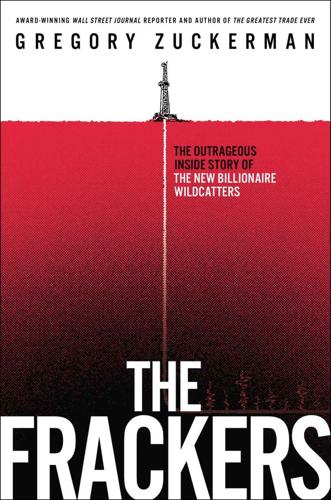
The Frackers: The Outrageous Inside Story of the New Billionaire Wildcatters
by
Gregory Zuckerman
Published 5 Nov 2013
“So we gave up on it, we just let the acreage go.” In 1999, a geochemist named Leigh Price in the Denver office of the U.S. Geological Survey took a good look at over one hundred old wells in North Dakota. He estimated that 413 billion barrels of high-quality crude were packed between the two layers of the Bakken shale, a huge amount of crude that should have excited the country. Some in the industry considered Price, an avid weightlifter who wore his hair in a ponytail, off his rocker. Before his study was peer-reviewed or published, he died of a heart attack in 2000. That year, Montana’s Board of Oil and Gas Conservation predicted the state’s oil production would decline to zero.
…
The idea was to isolate a section of the horizontal wellbore, frack it, and get oil flowing. After a dozen or more “stages,” the fracking would be complete. By segmenting the well and fracking it in stages with concentrated fluid, drillers were getting impressive amounts of oil from dense rock that had proven especially stubborn, like the Bakken shale. The new method was expensive. Drilling and fracking a North Dakota well in this new way cost about $8 million, compared with less than $4 million for a well that wasn’t fracked in stages. But Hoffman and the Continental group instantly understood how much more crude they might be able to get.
…
Now Continental’s pros realized that a new leg in the industry’s technological revolution had arrived: a way to get oil and gas to flow by fracturing even cementlike rock with short, concentrated blasts, thanks to EOG’s multistaged fracking innovation. In late 2006, Continental’s engineers began to employ the new methods to stimulate the Bakken shale and limestone. From the outset, they got much more oil from the wells, encouraging the executives. They also seized on an intriguing formation directly below the Bakken called the Three Forks. It was too early to be sure, but this formation also seemed full of oil. During a meeting in a Continental conference room, a geologist wrote “New Upside!”
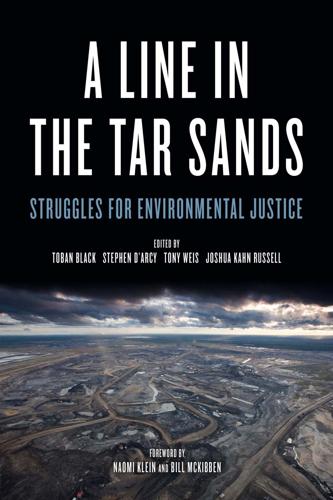
A Line in the Tar Sands: Struggles for Environmental Justice
by
Tony Weis
and
Joshua Kahn Russell
Published 14 Oct 2014
The reasons are much the same ones we have known since the vast expansion of the tar sands that followed the US invasion of Iraq: the price of a barrel of oil is high, and likely to stay that way as a general trend. There have been some major non-tar sands oil strikes in the last few years, and a casual glance at the business sections of most newspapers would have alerted many people to the “boom” underway in the Bakken shale around North Dakota and in other locales around the world. Such extreme extraction has also come with considerable confusion, as there is a fundamental difference between fracking for “tight” oil and mining for oil shale, or kerogen. Fracking is a procedure that releases normal liquid crude and natural gas from formations of shale that were impossible to recover prior to new fracking technologies.
…
Sarnia-Lambton Environmental Association, www.sarniaenvironment.com. 8. Enbridge’s Line 7 pipeline runs beside the western section of Line 9, and Enbridge has received permission to pump 180,000 barrels per day through this pipeline—a 22 per cent increase in the flow of oil through Line 7. 9. Bakken shale deposits extend across North Dakota, Montana, and Saskatchewan. 10. Court of Appeal for Ontario, DOCKET: C32170, C32188, C32202 (2000), www.usask.ca/nativelaw/factums/view.php?id=99. 11. Ibid. 12. Suncor, “Suncor Energy’s Sarnia refinery completes project to improve environmental performance and strengthen integration with oil sands operation,” news release, accessed June 16, 2013, www.suncor.com/en/newsroom/2418.aspx?
…
See Indigenous rights NATO, 311 Natural Resources Canada, 51 Natural Resources Damage Assessment (NRDA), 199 Navajo Nation, 168, 241; Black Mesa, 241 Nebraska, 178, 250 neo-conservatism, 13 neo-liberalism, 46, 50, 68, 75, 267, 270, 302, 306, 307 neo-Nazi organizations, 96 Netherlands, Canadian embassy in, 57 neurotoxins, 136 “new green economy,” 41 New York State, 315 Nexen, 92–93 NextGen Climate Group, 91 “NGO industrial complex,” 68 nibi (water) walkers, 262 Nicholls, Zak, 144 nickel, 254 Nieto, Yudith, 184 Nikiforuk, Andrew, 34, 53; Tar Sands: Dirty Oil and the Future of a Continent, 50 Nimbyism, 295 nitrogen oxides, emissions of, 32, 324n33 non-governmental organizations (NGOs), 23, 175, 186, 213–14, 244, 248, 270–71, 277; alliances with Indigenous communities, 41–42; environmental (ENGOs), 64–75, 88, 93, 167, 243, 248–49, 287, 310 “non-profit industrial complex,” 242 nonviolent direct action (NVDA), 173–74 Nooski, Larry, 163 North American Free Trade Agreement (NAFTA), 89, 92, 94, 96; “proportionality” clause of, 30 North American Mobilization for Climate Justice, 311 North Dakota, 314; Bakken shale boom near, 100, 138; as new Saudi Arabia, 282 Northern Gateway pipeline, 5, 11, 13, 17, 34, 41, 79, 91, 125, 162–63, 165, 204, 257, 312; and containing Indigeneity, 153–56; joint review panel (JRP), 148–50, 153–56, 158, 264; movement against, 146–59, 260 Northwest Territories, diamond mining in, 126 Norway, 29, 33; Canadian embassy in, 57; oil imports from, 31; Statoil, 29, 53, 56, 57–58, 102, 215; tar sands as election issue in, 56 nuclear power, 9, 218, 221–22, 224, 230, 250, 307, 314, 319 Nunavut, 316 Nuu-chah-nulth First Nation, 71; Central Regional Board, 71; Interim Measurements Agreement (IMA) Obama, Barack, 60–62, 91, 170, 174, 175–77, 186, 192, 221, 223, 234, 244–45, 284, 310, 318 Occupy movement, 74–75, 187, 238, 283–84 O’Connor, Dr.
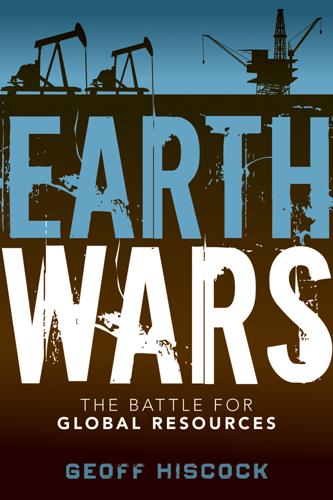
Earth Wars: The Battle for Global Resources
by
Geoff Hiscock
Published 23 Apr 2012
If the $40 billion project gets the go-ahead, construction will start in mid-2015, with the first gas to flow from Alaska in 2020–2021. Part of the problem for the Alaska gas suppliers is that according to the American Petroleum Institute, there could be much more oil and natural gas in the United States than previously thought. It points to the Bakken shale formation in North Dakota and Montana (which also extends north into Canada’s Saskatchewan and Manitoba provinces) as one example, where the U.S. Geological Survey (USGS) said in 2008 as much as 4 billion barrels of recoverable oil may exist there. That figure was 25 times greater than the original estimate back in 1995, but is still well below more recent estimates.
…
Index AAR (Alfa-Access-Renova) Abengoa Abidjan, Ivory Coast Abramov, Alexander Abramovich, Roman Abu Dhabi Access Industries Adani, Gautam Adani Group Adaro Energy Addax & Oryx Group (AOG) Addax Petroleum Aden Aditya Birla Group Adriana Resources Afghanistan Africa general coal copper iron ore oil and gas uranium African Minerals African Rainbow Minerals Agarwal, Anil Ahearn, Michael Aircraft carriers Akpo field, Nigeria Aksai Chin Aksumite kingdom Al-Assad, Bashar Al-Falih, Khalid Al Thani, Sheikh Hamad bin Khalifa Alasaka North Slope offshore reserves Albanese, Tom Alekperov, Vagit Alexandria, Egypt Alfa Group Alfa-Access-Renova (AAR) Algeria Aluminum, aluminium Aluminium Corp of China (Chinalco) Amazon River Ambani, Mukesh Amu Darya Amur and Ussuri Rivers Amyris Anadarko Basin Anadarko Petroleum Anben Iron & Steel Group Andersson, Martin Andes Aneka Tambang Anshan Iron & Steel Anglo American Angola Antarctic Antofagasta Minerals Apache Corp Apple Inc Applied Clean Tech Aquila Resources Arabian Sea Aral Sea ArcelorMittal Arch Coal Archer Daniels Midland Arctic, Arctic Circle, Arctic Ocean Areva Argentina Armenia Arrow Energy Arunachal Pradesh, India Asarco Asian Development Bank Aswan High Dam Ataturk Dam Athabasca Oil Sands Corp Athabasca oil/tar sands Athabaskan people Atlas Energy Atomic Energy of Canada Ltd (AECL) Atomredmetzoloto (ARMZ) Atyrau, Kazakhstan Australia Chinese investment in coal copper gas, LNG gold Indian investment in iron ore Japanese investment in rare earths uranium Australia Pacific LNG Azadegan oil field, Iran Azerbaijan Baffin Island, Baffinland Bakken shale field Baku Bakrie, Aburizal Baltic Sea Banco Bradesco Banco do Brasil Bangladesh Bashneft Baoshan Iron & Steel Baotou Barlow, Maude Barnett shale field Barrick Gold Batista, Eike Batista da Silva, Eliezer Bayan Obo Beas River Beihai Beijing Belgium Belo Monte Dam Belorusneft Ben Ali, Zine El-Abedine Bengal, Bay of Berau Coal Energy Berezovsky, Boris (also known as Platon Elenin) BG Group Bharat Petroleum Corp (BPCL) Bharuch, India BHP Billiton coal iron ore oil and gas Olympic Dam Pilbara shale uranium Biofuel ethanol Birla, Kumar M.

American Made: Why Making Things Will Return Us to Greatness
by
Dan Dimicco
Published 3 Mar 2015
Costs and Benefits Instead of pursuing extremist policies in the name of curbing a phenomenon that is mostly beyond mankind’s control, the United States should be thinking about real costs and benefits. Look at what’s happening in Wyoming, Colorado, Montana, Pennsylvania, and Ohio. Better yet, look at North Dakota with its Bakken shale. They’re going nuts up there. One study by IHS Consulting found that for every job in an oil or gas field, three jobs are created elsewhere in industries as diverse as manufacturing, information technology, health care, and education. Taxes and royalties are paying for schools, roads, hospitals, and research and development.

Twilight of Abundance: Why the 21st Century Will Be Nasty, Brutish, and Short
by
David Archibald
Published 24 Mar 2014
See also United States energy and, 137–59, 170–72, 186 as global hegemon, 181 global warming and, 8, 40, 147–49, 186 grain output, 4, 40 military involvement in Middle East, 47, 99, 122–23 threats to, 99, 111–13, 125–35 American Physical Society, 167–69 American Scientist, 163 Antarctica, Antarctic, the, 13–14, 17–18, 20 Apra Harbor Naval Complex, 132, 134 Arab Spring, the, x, 53–55, 94 Archangel temperature record, 21 Arctic, the, 13, 22 Argentina, 23, 68–69, 75–77, 186–87 Armagh Observatory, 21 Armenians, 51 Asia, 74, 112–13, 119, 121–22 Assad, Bashar, 55 Atlantis (oilfield), 145 August 1st Building (China), 125 Australasia, 29 Australia, 68, 178–79 climate science and, 4, 16, 28–30 international relations and, 74, 112, 115, 122, 125, 163 Azerbaijan, Azerbaijanis, 102 B baby boomers, 12 Bahamas Platform, 109 Bakken Shale, 144 Barnett, Thomas, 74, 77. See also Core countries Bar-Yam, Yaneer, 67 Belgrade, 111 Benda, Julien, x Bergius process, 145–46, 162 Bertrand, Karla Z., 67 beryllium, 19 beryllium-10 (Be10), 19 Bhutto, Benazir, 92 Bhutto, Zulfikar Ali, 90–92 Bingham Canyon, 161 Bishop, Rob, 149 “Black Eagle Long March” (fictional operation), 130 Blind Faith (oilfield), 145 BN-600 reactor, 162 Bonaparte, Napoleon, 49 Borlaug, Norman, 1, 44, 58, 65 Boston Herald, 78–79 Bracken, Paul, 101 Brazil, 23, 59–61, 68, 74 Britain, British, 2–3, 6–8, 71, 117–18, 186.

Dark Money: The Hidden History of the Billionaires Behind the Rise of the Radical Right
by
Jane Mayer
Published 19 Jan 2016
The revolutionary method of extracting gas from shale revived the American energy business but alarmed environmentalists. Among the “frackers” in the group were J. Larry Nichols, co-founder of the huge Oklahoma-based concern Devon Energy, and Harold Hamm, whose company, Continental Resources, was the biggest operator in North Dakota’s booming Bakken Shale. As Hamm, a sharecropper’s son, took his place as the thirty-seventh-richest person in America with a fortune that Forbes estimated at $8.2 billion as of 2015, and campaigned to preserve tax loopholes for oil producers, his company gained notoriety for a growing record of environmental and workplace safety violations.
…
Rockefeller. While his nearly billion-dollar divorce settlement and amazing rise from being born the youngest of thirteen children in a family of sharecroppers made tabloid history, business journals were more focused on his company, which almost overnight had become the face of fracking in North Dakota’s Bakken Shale. Joining him in the network, on the opposite end of the social scale, was Larry Nichols, head of Devon Energy and later chairman of the American Petroleum Institute, the foremost trade association for the oil industry. A graduate of Princeton and a former Supreme Court clerk, Nichols had urged his family’s Oklahoma energy company to buy Mitchell Energy after he noticed that its natural gas output was climbing because of fracking.

The Secret Club That Runs the World: Inside the Fraternity of Commodity Traders
by
Kate Kelly
Published 2 Jun 2014
He had a plan for optimizing the refinery’s output that involved expanding its production of jet fuel and trading its other refined products, such as diesel fuel and kerosene, in exchange for additional jet fuel. Initially, Delta’s crude would be shipped across the Atlantic from West Africa, a fairly costly trip, but within a few years, he figured, it would instead be coming from the Bakken shale formation in North Dakota, where huge stores of underground crude were now being harvested. In the meantime, he comforted himself that he’d worked at Conoco and another driller and knew how to bargain with suppliers to keep crude relatively cheap. And once the Bakken crude was more accessible, he figured, Delta’s considerable expertise in physical logistics would help it move supplies quickly and cheaply.
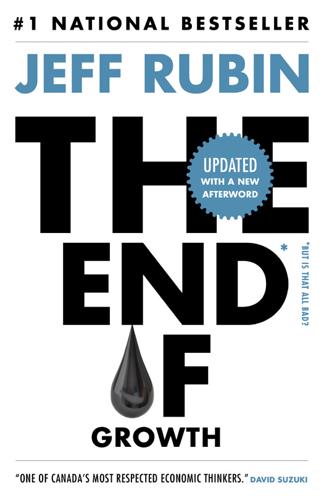
The End of Growth
by
Jeff Rubin
Published 2 Sep 2013
The stakes are high enough that Enbridge and Ottawa won’t hesitate to cut some big checks to gain the support of local interest groups. Ottawa has the incentive to do everything it can to make a proposed pipeline a reality as soon as possible. If Northern Gateway ever sees the light of day, the big loser will be the US economy. Even with the Bakken shales and other tight oil plays, President Obama knows full well that the United States needs as much Canadian oil as it can get. If the political winds don’t shift soon, America’s loss could turn into China’s gain. Maybe Obama should have joined Jack and me on our fishing trip to Princess Royal Island.

No Ordinary Disruption: The Four Global Forces Breaking All the Trends
by
Richard Dobbs
and
James Manyika
Published 12 May 2015
In less than a decade, the price of natural gas has fallen from more than $12 per unit (million British thermal units) to around $4 to $5 per unit in the United States. And as gas supply outstrips demand and prices remain low, producers are turning to fracking for oil in formations like North Dakota’s Bakken Shale. Other unconventional sources are also being explored, including coal-bed methane and methane clathrates. Meanwhile, even as the unconventional fossil fuel revolution takes off, the cost of renewable electricity generation continues to fall rapidly. Since 1990, the cost of solar cells has dropped from nearly $8 per watt of capacity to one-tenth that amount.
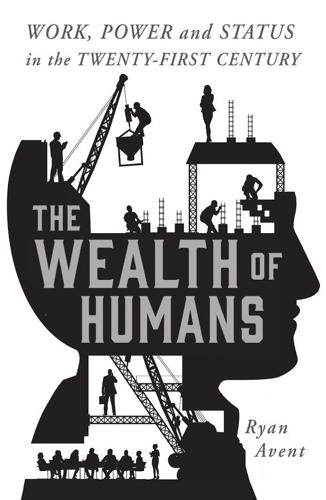
The Wealth of Humans: Work, Power, and Status in the Twenty-First Century
by
Ryan Avent
Published 20 Sep 2016
At the Mississippi River, the great tangle of lights of the eastern cities gives way to the dark of the prairie. But there on the northern Plains, west of Minneapolis and north of Denver, where nothing but emptiness ought to be, is a blaze of light as big as Chicago. What has taken over the North Dakota countryside is not a massive new supercity but the fracking wells of the Bakken shale, one manifestation of an extraordinary American energy revolution. The hundreds of wells that dot the land are spot-lit at night, and are occasionally ablaze with light when excess natural gas from the wells is burnt off. Of the new work that resembles the mass employment of the industrial past, jobs in fracking are probably the closest analogue to industrial-era factory jobs.

Green Tyranny: Exposing the Totalitarian Roots of the Climate Industrial Complex
by
Rupert Darwall
Published 2 Oct 2017
The next two years saw the three branches of government clear the ground on which President Obama’s Energiewende would be built. Unlike Europe, America had already embarked on its own energy transformation, one not foreordained by politicians and regulators but brought about by the genius of capitalism and wrought by Adam Smith’s invisible hand. Geologists had long known about enormous shale formations such as the Bakken Shale of North Dakota and Montana, the Barnett Shale of Texas, and the Marcellus Shale running through northern Appalachia. Hydraulic fracturing dates back to the 1940s but was not widely deployed until 2003. Other than exempting fracking from the Safe Drinking Water Act in 2005, as far as politicians in Washington were concerned, the fracking revolution might as well have been happening on another planet.
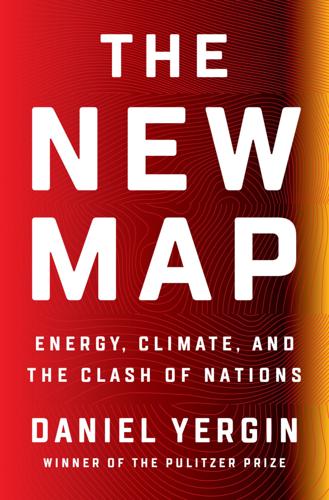
The New Map: Energy, Climate, and the Clash of Nations
by
Daniel Yergin
Published 14 Sep 2020
See also specific countries such as China Asia International Infrastructure Bank (AIIB), 182 Asian financial crisis of 1998, 75 Asquith, Herbert, 196 Assad, Bashar al-, 241–42, 243–45, 269 Assad, Hafez al-, 242 Association of Southeast Asian Nations (ASEAN), 148–50, 168–69, 169n Astana International Financial Center, 177 Ataturk, Mustafa Kemal, 201–2 Australia, 38, 114, 167, 169, 189, 281 Austria, 30 Austro-Hungarian Empire, 196, 200 automobile industry automobile manufacturing, 42, 132 and autonomous vehicles, 347–57, 368–69, 373 Auto-Tech advances, xviii, 366–73, 415, 427 Chinese market for U.S. cars, 171 See also electric vehicles Azerbaijan, 71, 74, 109, 120–23, 207, 281 Ba’athists, 207, 211–13, 216–17, 242, 268 Bab al-Mandeb, 251 Badri, Ibrahim Awad al-, 268 Baghdadi, Abu Bakr al-, 268–9, 271 Bahrain, 240–41, 306 Bai Meichu, 139–41, 150 Baker, James, 215 Bakken shale, 19–20, 21–22, 49 Balfour Declaration, 199 ballistic missiles, 226–27 Bank of England, 384 Banna, Hasan al-, 259–60 Barkindo, Mohammad Sanusi, 280–81, 319 Barnett Shale, 5–7, 14, 19, 23, 24 Barra, Mary, 333–34, 370 Bashneft, 76 battery technology, 327–34, 341, 344–46, 403, 429 Bazhenov formation, 98 Beckman, Robert, 145, 146 “Beijing consensus,” 116 Belarus, 74 Belt and Road Initiative (China), xvi, 134, 177–90, 185 Ben Ali, Zine el Abidine, 236 Benghazi, Libya, 239 Bernanke, Ben, 26 Bhatt, Alia, 342 Biden, Hunter, 110 Biden, Joe, 110, 237, 392 Bin Laden, Osama, 263–64, 265 biomass and biofuels, 394, 408, 410 BlackRock, 385 Black Sea, 122 Blue Stream pipeline, 85 Boko Haram, 270 Bolshevik Revolution, 69, 72, 79 Bolsonaro, Jair, 44–45 Bosporus strait, 122 Boston, Massachusetts, 112–13 BP, 15, 76, 386 Brazil, 38, 44–45, 56–57, 320 Breakthrough Energy Coalition, 403 BRIC era, 56–57, 76–77, 273 Britain and the United Kingdom and Brexit, 343 and carbon emission reduction, 388 and Central Asian economic ties, 177 and First Sino-Japanese War, 154 and Iranian Revolution, 207 and Iraqi oil infrastructure, 232 and Middle East colonialism, 194–200, 197 and Nasser’s Arab nationalism, 203–4 and Syrian civil war, 247 and the Thucydides Trap, 131, 154 and Ukrainian independence, 80 as “workshop of the world,” xvi, 132 Brookings Institution, 59 Brouillette, Dan, 320 Brunei, 33, 143, 169n Budapest Memorandum, 95 Burgan oil field, 24 Burisma, 110 Burkan missiles, 251–52 Burns, Larry, 351–52, 368 Burns, William, 225, 238 Bush, George H.